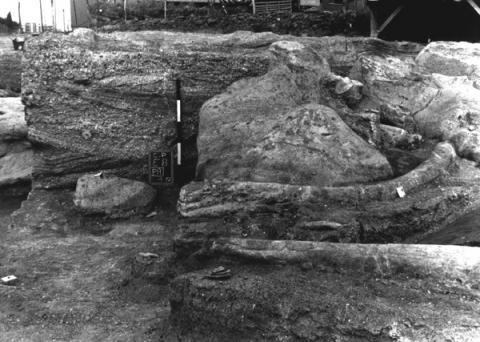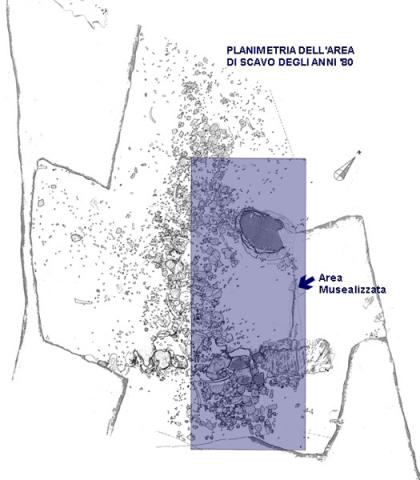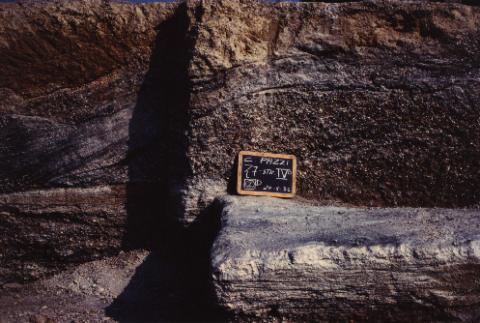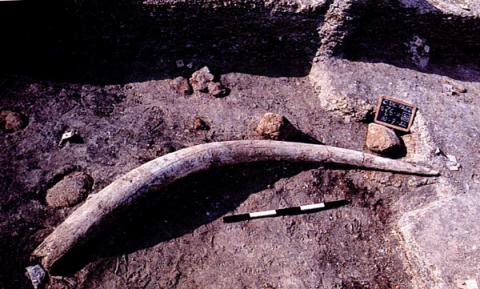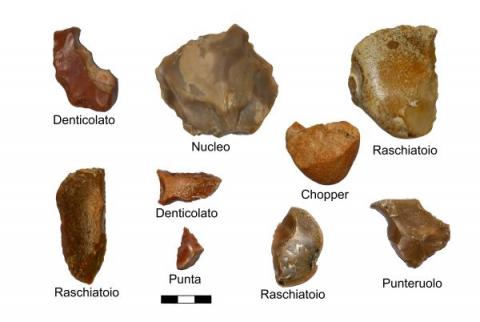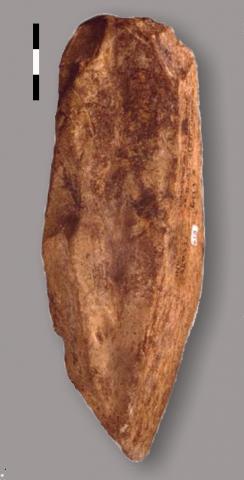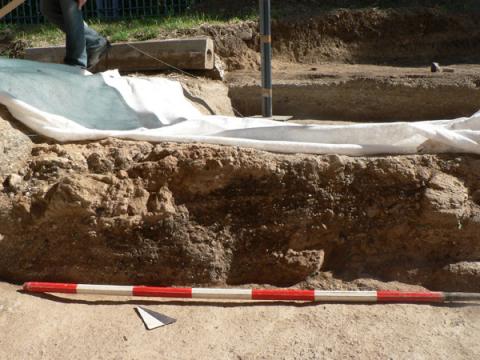The Excavation
The discovery of the Pleistocene deposit of Rebibbia - Casal de 'Pazzi and the excavation that followed, carried out by the Archaeological Superintendence of Rome from 1981 to 1985, and directed by Dr. Anna Paola Anzidei, have considerably contributed to improve the knowledges on the earliest stages of human peopling of the Rome territory and of the Italian peninsula as well.
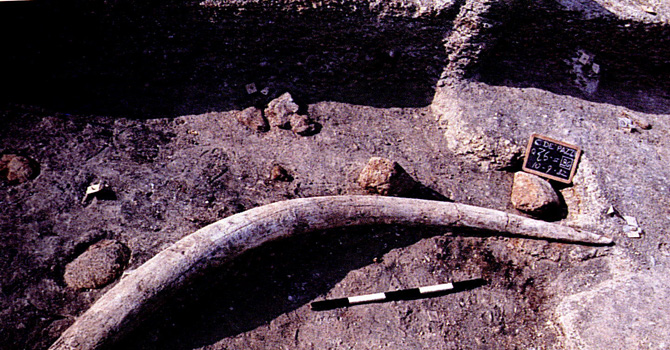
The excavation, which included an area of over 1,200 square meters, led to the discovery of a wide Pleistocene deposit, interpreted as a portion of the bed of an ancient river.
The width of the excavation area and the amount of finds required the partnership of different scholars with specific skills, such as A.G. Segre for geology and stratigraphy, P. Cassoli for faunal remains, A. Bietti for archeology, as well as the steady technical and scientific contribution of M. Ruffo on the yard.
The long lenght and the great extension of the excavation area required the financial contribution of many agencies. At first, funds were allocated from the V Department of the of Rome Municipality (Public Works), which carried out the ongoing urbanization work, and subsequently the excavation was financed by the Ministry for Cultural Heritage.
During the urbanization of the neighborhood, other sites in the area were also interested in researches through drillings, that provided new valuable data for the understanding of the geological history of the territory.
The site, located on the right bank of the Aniene River, at 32 meters above the sea level, was characterized by layers of pyroclastic gravels and sands (ie originating from volcanic rocks) in which were found, with uneven distribution, lithic industry and fossil bones.
The bones belonged mainly to large mammals (particularly Elephas (Palaeoloxodon) antiquus, Hippopotamus amphibius, Bos primigenius, Cervus elaphus, Dicerorhinus sp.), and to water birds. In the lower level, near the bottom of the river basin, a fragment of human parietal was found.
In the large deposit the layers that filled the riverbed were removed until to reach one of the banks of the river. A natural barrier formed by the rock substrate, which was interpreted at the time as 'tufo litoide' (rock produced by Albano volcano about 360,000 years ago), then smoothed by water, had led to an accumulation of big faunal remains at a specific point of the river route. In particular, tusks and bones of Elephas was trapped between the cliffs and tufa blocks.
Furthermore, in the lowest part of the river bed, large blocks, carried by the stream, were concentrated, while the banks were free.
The thickness of the deposit exceeded, in the middle of the riverbed, over two meters and gradually decreased, disappearing at the banks. Therefore, in the marginal areas also decreased the density of animal remains, in particular those of large size.
This changed also in relation to the composition and the thickness of the different layers; it was higher in those made of coarse pyroclastic material (gravels) and less in the layers of sands and silt.
Altogether about 2,200 skeletal remains and more than 1,700 stone tools were found, which, because of fluvial nature of the deposit, are undoubtedly in secondary deposition, and show different degrees of rounding.
Both for the considerable number of finds and for their remarkable size, the animal species that has become the symbol of the site, is the Elephas (Palaeoloxodon) antiquus, mainly represented by tusks (25 entire and about fifty fragments), but also by molars (60 entire and 120 fragments), scraps of pelvis and skulls and long bones.
During the excavation all the finds were numbered and listed according to their stratigraphic and spatial position, and then identified with coordinates, in order to reconstruct afterwards their spatial distribution and a possible chronology in the deposition. In particular, the finds found in the area near the banks may had more limited shifts due to the weaker current, while those gathered in the midst of the river bed, where the current was certainly stronger, could have gone a long way.
The copious lithic industry discovered is almost entirely made out of flint pebbles, both coming from the same river deposit that from outcrops far up to 50 km from the site.
Many different tools are represented, and most of these are typical of the middle Paleolithic age, such as scrapers, denticulates, and notches.
A fragment of elephant diaphysis has been intentionally modified with detachments that have altered and thinned its edges. Other detachments are visible on an metaphodial epiphysis of Bos primigenius. Both objects were used as tools.
In June 2013, during some works in the outdoor area of the museum, which consisted in the construction of a landscaped garden with plants compatible with the Pleistocene environments, a pathway and 3 rest areas intended for teaching activities, a second, short excavation campaign was carried out.
During this works, in an area already affected by an digging carried out during the 80s, a bulldozer excavation was executed. A sequence of layers of sands and gravels attributable to the archaeological deposit, still in place, was so intercepted.
According to Dr. Anna De Santis, responsible of the prehistory Office of the Superintendence for Archaeological Heritage of Rome, the stratigraphic excavation of a small strip of the archaeological deposit was so carried out. This was a river bank area of the main river course, also affected by another, rather intense, river channel.
Data coming out from this second campaign confirms, in principle, the deposition dynamics already observed in the past, but studies and deepening are still ongoing.
Fig 1- 1982: Tuff rocks, sands, gravels and elephant tusks
Fig 2 - Map of the excavation area: highlighted the area today inside the museum
Fig 3 - Layers of gravels and pyroclastic sands
Fig 4 - Tusk of Straight-tusked elephant
Fig 5 - Lithic industry
Fig 6 - elephant diaphysis with detachments
Fig 7 - The 2013 excavation




























